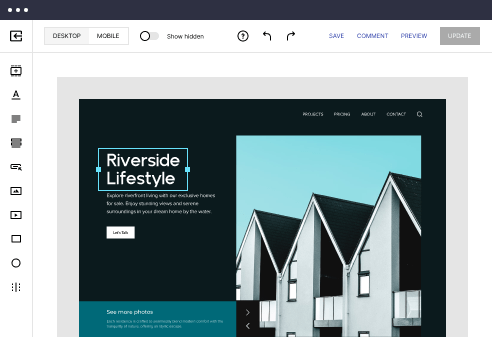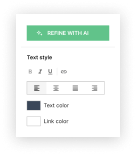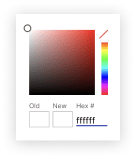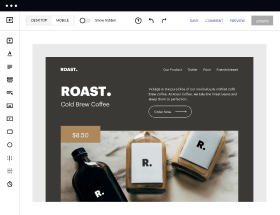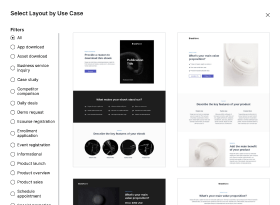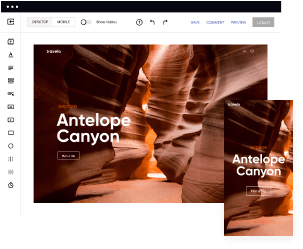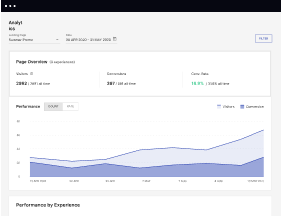Showcase your Digital marketing strategists expertise with our HTML page template
Attract clients and showcase your skills with style using our landing page templates for Digital marketing strategists. Let's convert those visitors into clients!
Attract clients and showcase your skills with style using our landing page templates for Digital marketing strategists. Let's convert those visitors into clients!
Easy to build without coding
With the intuitive drag-and-drop builder, anyone on your team can create high-converting pages without any knowledge of code or design. Make enhancements to your landing page with custom widgets using Javascript, HTML/CSS, or third-party scripts.
Multiple layouts for any industry and goal
Select from 500+ landing page layouts built to boost conversions across industry-specific scenarios. Customize them by adjusting fonts, adding images, and generating on-brand content with the AI assistant. Quickly scale with Instablocks® and Global Blocks that you can save, reuse, and update globally.
Loads fast and looks polished on any device
Every template is responsive, which means they present professionally on any device and load blazingly fast with our Thor Render Engine.
Robust analytics & experimentation
Get real-time updates and reporting across all your devices, showing the number of visitors, conversions, cost-per-visitor, and cost-per-lead. Launch AI-powered experiments, run A/B tests, and use heatmaps to analyze user behavior, then optimize your landing page to maximize conversions.
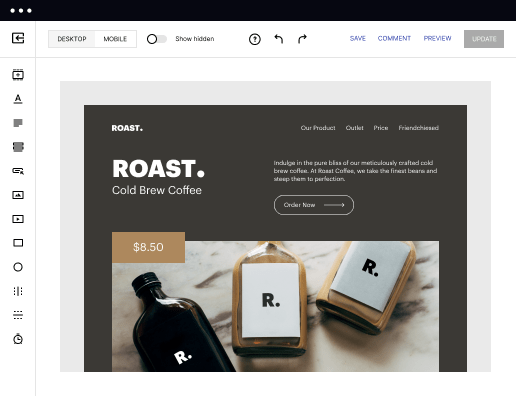
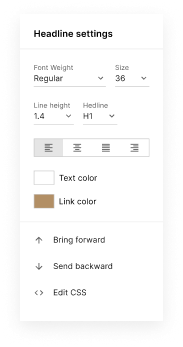
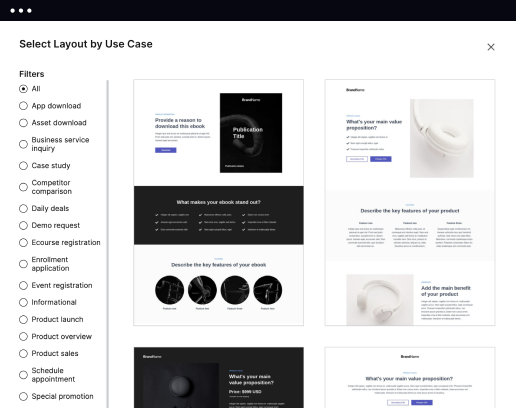
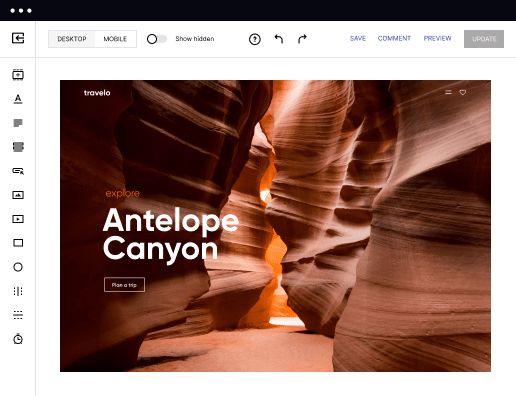

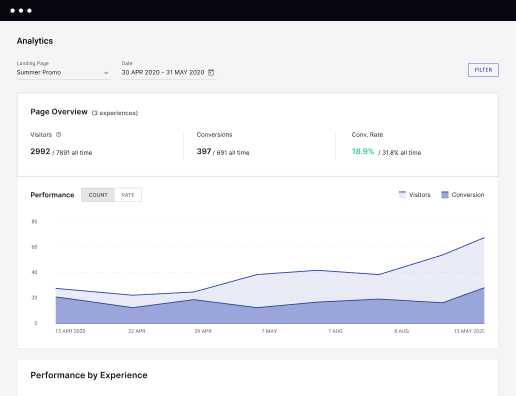
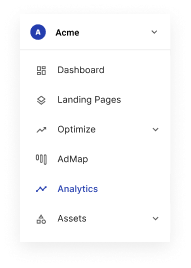
Easy to build without coding
With the intuitive drag-and-drop builder, anyone on your team can create high-converting pages without any knowledge of code or design. Make enhancements to your landing page with custom widgets using Javascript, HTML/CSS, or third-party scripts.
Multiple layouts for any industry and goal
Select from 500+ landing page layouts built to boost conversions across industry-specific scenarios. Customize them by adjusting fonts, adding images, and generating on-brand content with the AI assistant. Quickly scale with Instablocks® and Global Blocks that you can save, reuse, and update globally.
Loads fast and looks polished on any device
Every template is responsive, which means they present professionally on any device and load blazingly fast with our Thor Render Engine.
Robust analytics & experimentation
Get real-time updates and reporting across all your devices, showing the number of visitors, conversions, cost-per-visitor, and cost-per-lead. Launch AI-powered experiments, run A/B tests, and use heatmaps to analyze user behavior, then optimize your landing page to maximize conversions.
All the features you need to build lead-generating landing pages
Explore more featuresLearn how to build top-performing landing pages for any goal
FAQs
Leading the way in building high-performing landing pages





A comprehensive step-by-step guide for using Instapage to maximize your landing page effectiveness
With the growing competition in digital marketing, understanding how to effectively use Instapage for your landing pages can tremendously impact your campaign success. This guide will provide you with actionable steps to optimize your digital marketing strategies.
Step 1: Choose the right landing page template
Selecting a high-converting template is crucial for capturing leads. Instapage offers over 100 customizable templates tailored for various industries like education, tech/SaaS, and financial services. Here are some reasons to prioritize template selection:
- Templates save time by providing a tested framework that resonates with your audience.
- Using industry-specific designs enhances relevancy and user experience.
- Customizing templates ensures alignment with your branding while maintaining functionality.
Step 2: Optimize your landing page for conversions
Once your template is selected, focus on optimizing it for maximum conversions. This involves using Instapage’s built-in experimentation features to understand user behavior.
- Utilize heatmaps to identify where users are clicking — focus on optimizing these areas.
- Conduct A/B tests to refine your headlines, calls-to-action, and images to enhance landing page performance.
- Use Instapage's analytics dashboard to track conversions and make data-driven decisions.
Step 3: Implement personalization strategies
Personalizing your landing page is key to improving user engagement. Instapage allows you to dynamically adjust content based on user data, ensuring each visitor has a unique experience.
- Use dynamic text replacement to match the ad copy with the landing page.
- Employ AdMaps to align ads with specific landing pages, increasing relevance and reducing bounce rates.
- Segment audience data to tailor your approach based on demographics, such as location, industry, or previous interactions.
Following these steps will set a solid foundation for your campaigns, allowing you to leverage Instapage's full potential and optimize your leads consistently.
In conclusion, implementing these strategies effectively can significantly boost your digital marketing performance. Instapage provides the tools necessary to create, optimize, and personalize your landing pages for maximum ROI.
Ready to take your landing pages to the next level? Start using Instapage today and see the difference in your digital marketing campaigns!
People also ask about HTML page template for Digital marketing strategists
The power of HTML page templates for digital marketing strategists
Defining HTML page templates in digital marketing
HTML stands for HyperText Markup Language, and it serves as the backbone of all web content. For digital marketing strategists, a solid understanding of HTML is crucial as it allows them to create engaging and effective web pages. HTML is essential for establishing the structural framework of a site, ensuring that all digital content is presented in a user-friendly manner.
An HTML page template refers to a pre-designed webpage layout that can easily be customized for various marketing needs. Typically, these templates include all the necessary components such as headers, footers, navigation menus, and call-to-action elements. By using a standardized template, marketers can streamline the design process, reduce time spent on creating pages from scratch, and ensure consistency across their marketing materials.
Templates are significant for increasing efficiency and maintaining a cohesive brand image throughout marketing campaigns. They not only save time but also allow teams to focus on strategy and content rather than getting bogged down in the technicalities of web design.
Versatility of HTML page templates across devices
Responsive design has become a critical aspect of web development, especially for digital marketing. HTML page templates are designed with responsiveness in mind, enabling them to adapt seamlessly to various screen sizes. This adaptability is crucial, as users may access content from different devices, including smartphones, tablets, and desktop computers.
To achieve fluid layouts and accommodate flexible images, marketers lean on responsive frameworks like Bootstrap and Foundation. These frameworks offer grid systems and CSS classes that make it easier to develop adaptive designs. With proper use of media queries and flexible grid layouts, HTML templates provide an optimal viewing experience for users, contributing to higher engagement rates.
How templates adapt to various screen sizes through responsive layout techniques.
Implementing fluid images that adjust based on the viewing context.
Cross-device compatibility is another critical focus for digital marketers. HTML templates must account for browser compatibility, ensuring that pages function correctly across all major web browsers. Mobile optimization strategies are also vital, incorporating touch-friendly navigation, legible text without zoom, and content that is prioritized for swift mobile viewing.
Stylish structure: stylesheets and HTML integration
Stylesheets play an important role in enhancing the aesthetic appeal of HTML templates. Marketers can easily customize stylesheets to align with their brand identity, ensuring that colors, fonts, and overall styles are consistent throughout the website. By utilizing CSS frameworks, marketers can speed up template development whilst maintaining a professional appearance.
Advanced tag usage in HTML is also essential for improving readability and search engine recognition. Semantic HTML tags, such as header, footer, and article, enhance the structure of the document, making it more understandable for both users and search engines. Furthermore, implementing microdata and schema can provide additional context to search engines, improving visibility in search results.
Customizing stylesheets to ensure brand consistency across all pages.
Using semantic HTML tags for improved SEO and accessibility.
Templates designed for customization
User-friendly customization features are often what set HTML templates apart. Many templates come with drag-and-drop capabilities, allowing marketers without coding backgrounds to modify layouts effortlessly. This ease of use empowers teams to create unique landing pages tailored to specific campaign goals without needing extensive technical knowledge.
Branding needs can be effectively addressed through template personalization. Marketers can incorporate company logos, select brand colors, and choose appropriate fonts that align with the overarching brand strategy. This level of customization is essential for ensuring that every page serves as an extension of the brand's identity, reinforcing trust and recognition among audiences.
Incorporating logos, colors, and fonts specific to brand identity.
Ensuring page elements align with broad marketing and brand strategies.
Enhancement of engagement through templates
Interactivity is increasingly important for engaging users, and HTML templates provide numerous opportunities for this. By incorporating interactive elements like embedded videos and animations, marketers can capture audience attention more effectively and encourage further exploration of the content. Additionally, well-designed forms and clear call-to-action buttons can significantly drive conversions.
Furthermore, dynamic content integration is a valuable feature of modern HTML templates. Marketers can utilize AI tools to create personalized user experiences based on behavior, preferences, and location. By incorporating real-time data feeds into landing pages, businesses can offer relevant content that aligns with user interests, thereby increasing engagement and conversion rates.
Adding embedded videos and animations to enhance the user experience.
Leveraging AI for personalized content delivery based on user behavior.
SEO optimization features in HTML templates
For digital marketing strategists, search engine visibility is crucial for driving organic traffic. Utilizing proper meta tags in HTML templates is key for better indexing on search engines. This includes implementing title tags, descriptions, and relevant keywords to ensure that the content is discoverable by users searching for related topics.
Additionally, structured URLs play a significant role in how search engines perceive page relevance. Well-crafted URLs that reflect the content's hierarchy can enhance SEO rankings. Image optimization is also an essential aspect, where techniques such as alt tags and reduced file sizes contribute to faster loading times and improved search engine rankings.
Importance of structured URLs for improved indexing and user clarity.
Utilizing heading tags to enhance both readability and SEO.
Seamless integration with digital marketing tools
Compatibility with email marketing platforms is a vital aspect of HTML templates. These templates can be designed to facilitate email sign-ups and lead generation, allowing marketers to build their email lists efficiently. By integrating landing pages with their newsletters, businesses can create cohesive marketing strategies that lead to maximum reach and engagement.
Moreover, analytics and tracking are essential for measuring the effectiveness of digital marketing efforts. HTML templates can incorporate analytics and tracking scripts, enabling marketers to monitor user behavior, conversion rates, and overall performance. This data is crucial for making informed decisions for future optimizations, ensuring ongoing success in digital marketing campaigns.
Embedding tracking codes to monitor performance and gather insights.
Integrated analytics tools for real-time data assessment and optimization.
Best practices for template utilization
Continuous optimization is key to maximizing the effectiveness of HTML templates. A/B testing landing pages allows marketers to evaluate which designs perform better in terms of user engagement and conversions. Insights from these tests can provide valuable data for further refinements, ensuring landing pages consistently meet user needs and preferences.
Staying updated with HTML standards is also essential. Compliance with web standards not only ensures that pages perform well across different browsers but also enhances accessibility. Marketers should remain proactive by pursuing ongoing education in HTML, CSS, and template design to keep up with technological advancements.
Perform A/B testing to optimize landing page effectiveness.
Engage in ongoing education to adapt to web standards.
Innovative trends in HTML templates for digital marketing
The emergence of AI-powered templates is proving to be a game-changer in web design. As AI technology advances, it can streamline the creation and customization of templates, making the process faster and more efficient. Marketers may soon harness AI capabilities to deliver personalized experiences, automating the customization process based on user data.
In addition, a shift towards performance-oriented templates is becoming evident. Marketers recognize that website speed and efficiency significantly impact user experience, leading to a focus on fast-loading designs with minimal code. This trend aligns with user expectations for quick access to information, ensuring that HTML templates cater to today's digital landscape.
Exploration of AI tools to enhance template customization and efficiency.
Emphasis on performance-oriented designs to meet user speed expectations.
Case studies: success stories from digital marketing strategists
To illustrate the effectiveness of HTML templates, numerous businesses have transformed their marketing campaigns using these tools. Case studies reveal that companies have witnessed significant engagement and conversion boosts after implementing well-designed templates. By analyzing these case studies, digital marketing strategists can glean insights about effective strategies and areas for improvement.
Interviews with industry experts further shed light on the evolving landscape of digital marketing. Through these discussions, professionals share practical tips on how to maximize the use of HTML templates effectively. By considering their experiences, marketers can refine their approaches and better align their strategies with current trends in digital marketing.
Real-world examples showcasing the impact of HTML templates on marketing efforts.
Expert insights on effective strategies for utilizing templates.
Ready to skyrocket conversions?
Supercharge your ad campaigns with high-performing landing pages
Get started